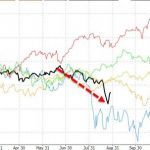When it comes to explaining why the post-crisis world has been defined by lackluster aggregate demand and a deceleration in global trade, all roads lead to China.
Indeed, the country’s attempt to mark a difficult transition from an investment-led, smokestack economy to a consumption and services-led model has contributed mightily to an epic downturn in commodities which has in turn conspired with an expected Fed tightening cycle and a laundry list of country-specific political risk factors to push EM to the brink of disaster.
All of this is complicated by the fact that no one really knows how China’s economy is actually doing.
Everyone knows the “official” GDP prints are a joke and alternative measures such as the Li Keqiang index and the CBB paint a worrying picture of how the world’s engine of global growth and trade is really performing. “National sales revenue, volumes, output, prices, profits, hiring, borrowing, and capital expenditure were all weaker than the prior three months,” the CBB reported just days ago, commenting on the performance of the Chinese economy in Q4. The profit reading is “particularly disturbing,” CBB President Leland Miller said, before noting that the share of firms reporting earnings gains has slipped to the lowest level ever recorded.
As we documented last month, the credit impulse in China rolled over and died in October as banks are reluctant to lend in the face of rising NPLs and corporates are reluctant to borrow in the face of an acute overcapacity problem.
Meanwhile, Beijing’s deficient deflator math – which causes the NBS to habitually overstate GDP in times of rapidly falling commodity prices – only adds to the confusion.
So, how swiftly (or not) is China’s economy actually growing? Well, no one knows, but as we noted last week, you can hardly blame the sellside penguin brigade for sandbagging the numbers.














Leave A Comment